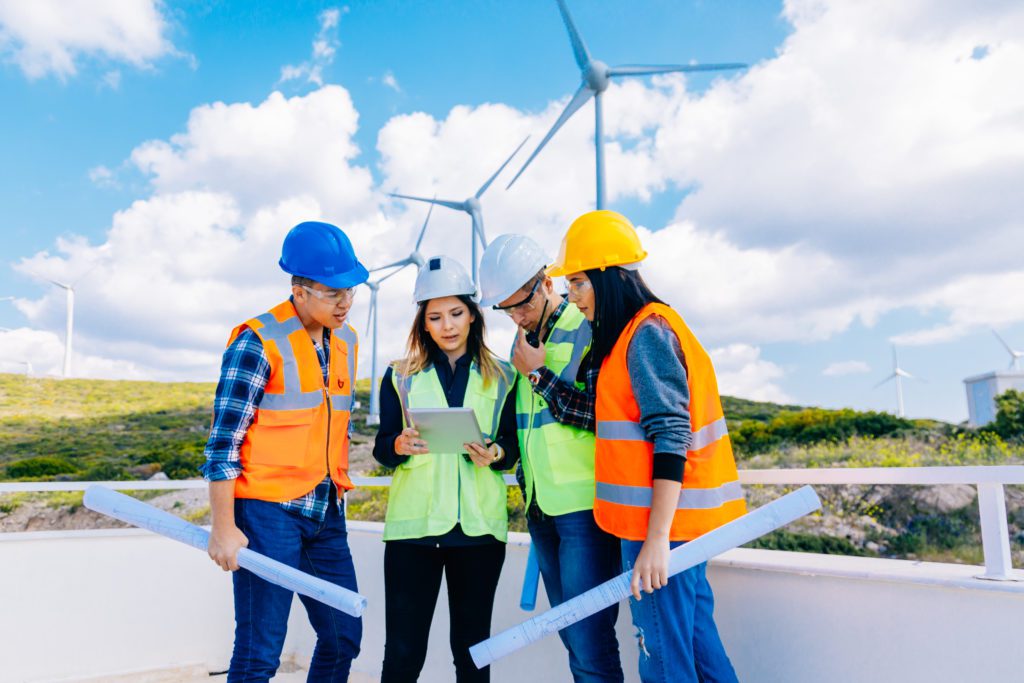Everything from turbulent global markets to local climate disasters reflects the urgent need for Canada to phase out fossil fuels. As we begin to transition, it is critical we have a robust, well-rounded plan for the workers and communities so everyone finds their place in the green economy. The government says it is on board, but the progress to date has been slow.
A just and equitable transition means responding to the climate crisis by rapidly decarbonizing our economy while ensuring that workers and communities impacted by this shift have access to good jobs, good services, and good lives.
This shift is in reach for Canada, and we should look at examples from around the world for lessons learned.
Read part one to discover the ways in which the town of Tonawanda and the Indigenous community of Six Nations of the Grand River have already been walking the talk on a “just transition”.
The Philippines’s Green Jobs
In 2016, the Philippines had over 9.3 million people working in the polluting fossil fuels sector.
For a country that already has weak social safety programs and worker protections, the looming transition to a zero carbon economy could have been catastrophic, thankfully the government recognized the need to act and passed legislation.
The Philippines passed the Green Jobs Act in 2016, which was designed to incentivize the private sector to invest in sustainable sectors and train workers for new employment opportunities. During the same period, the country partnered with the International Labour Organization (ILO) to implement the Guidelines of a Just Transition. The Guidelines are a tool to help all levels of government manage the transition to a zero carbon economy by principles for a just transition, mechanisms for robust consultation processes, and a list of policies which governments should consider as part of their just transition plan.
In 2018, after the implementation of the Green Jobs Act as well as broad stakeholder consultations and numerous opportunities for knowledge sharing between constituents, the ILO and the Philippines reported they had successfully:
- Established and used a mechanism for cooperation among key government agencies, social partners, and key stakeholders and experts.
- Trained government and social partners to quantify green jobs and analyze environmental, economic and labour market linkages.
- Developed and implemented green jobs advocacy strategies, which included training up Green Jobs “champions” and publishing tools such as best practices documents and other knowledge products.
- Developed a comprehensive Just Transition framework for mining communities, which is now used by the Office of the President for regional policy-making related to the energy transition.
Although these mechanisms and strategies are still being implemented, a future assessment will be needed to determine their effectiveness. This still sets the Philippines on the right course to better align stakeholders with official processes as they take part in the global energy transition
Lessons learned: Rely on existing frameworks such as the ILO’s guidelines and start early.
Alberta’s coal towns and workplaces
In 2015, the Canadian and Alberta governments committed to phasing out coal-powered electricity by 2030. In 2017, as a result of pressure from unions united under the banner of the Coal Transition Coalition, the Alberta government set up a 40 million dollar transition fund to assist workers. The funds could be used to cover relocation fees, bridge the gap to re-employment or retirement and develop skills for new careers.
In Wabamun Alberta, a large coal mining community that faced heavy layoffs, a Just Transition Centre was created thanks to the transition fund. It provided workers supported access to the above resources and funds. At least 37 workers accessed bridge loans, 2 of whom retired, and a further 20 chose to use the funds in the form of a tuition voucher.
Affected towns and communities were able to apply for funds to re-invest in their local economies, for reference $5 million of the funds supported 12 projects in 17 communities across the province.
The Highvale mine alone in Wabamun had over 700 unionized workers and hundreds of non-unionized ones. While the Alberta transition was deemed a good start by some workers and community leadership, it fell short of what was needed to consider a just transition. The coal phase-out was mandated to happen by 2030, meaning workers and governments thought they had a long runway to identify their next steps. Companies ended up unilaterally accelerating the phase-out of coal-powered generation to 2022, which resulted in several rapid rounds of layoffs. Moreover, the companies cut a $1.36 billion deal with the government to convert their coal-powered plants to gas-powered ones, with no worker retention or worker support conditions attached to the funds. Contrast that sum to the $40 million set aside for workers and communities.
The main criticism workers voice regarding the just transition programs was that they were too little too late: the tuition voucher did not cover the actual cost of being retrained for a new career and was restricted to very specific courses, several rounds of layoffs took place before the funds arrived, and many non-unionized workers fell through the cracks as the Just Transition Centre was unable to reach them, while communities had no indication as to whether there would be future rounds of funding for their projects.
Although Canada’s phase-out of coal is not a perfect example of a transition, it triggered the critical first step of establishing just transition policies and programs to ensure the protection of workers as an industry was closed down. We should use the success and failures of this example o develop a rounded robust transition policy to ensure that workers and communities alike are properly set up for the future as we pivot away from high emitting industries.
Lessons learned: Use tripartite negotiations, meaning workers, governments and companies are at the same negotiating table, instead of cutting bilateral deals with industry; and build flexibility into your plans as not everything can be anticipated.
Canada has committed to making our energy transition a fair one. We won’t find a cookie-cutter plan to make it happen, but the wealth of case studies from around the world give us the ideas and cautionary tales we need to get started.
See here for Part One.
Learn more about each case here:
Sign our letter to tell the federal government what a fair transition should look like. See here to take action.







